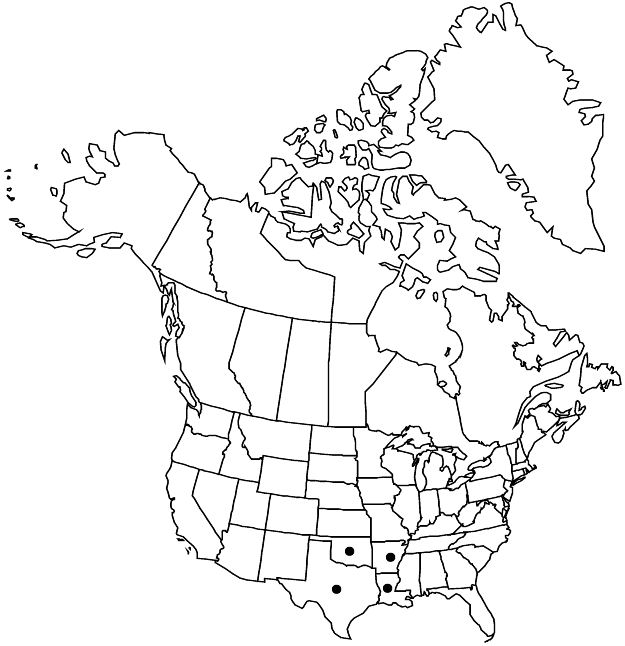Cnidoscolus texanus
Fl. S.E. U.S., 706. 1903.
Plants (30–)40–50(–100) cm. Leaves: stipules 3–4 mm, margins usually deeply toothed, rarely entire; petiole 5–18 cm; blade ± round in outline, 6–15 cm diam., deeply lobed, lobes 3/5–4/5 blade length, base broadly cordate, margins dentate, teeth and lobe apices acute, not aristate. Staminate flowers: calyx funnel-shaped, tube 12–17 mm, distally flaring, stinging hairs present, lobes 10–17 mm; stamens of outer whorl shorter than inner, filaments of outer whorl distinct or connate basally, of inner whorl connate most of length; staminodes 0. Pistillate flowers: sepals 15–25 mm; stigmas 12–24. Capsules 15–20 mm. Seeds brown, sometimes mottled, 14–18 mm. 2n = 36.
Phenology: Flowering mainly Apr–Jul(–Nov).
Habitat: Sandy open woods, fields, disturbed areas.
Elevation: 0–900 m.
Distribution

Ark., La., Okla., Tex., Mexico (Tamaulipas).
Discussion
Both Cnidoscolus texanus and C. stimulosus are found in Louisiana, but their distributions are separated by about 250 km, with C. texanus found in the western half of the state and C. stimulosus restricted to St. Tammany and Washington parishes in the east.
Selected References
None.